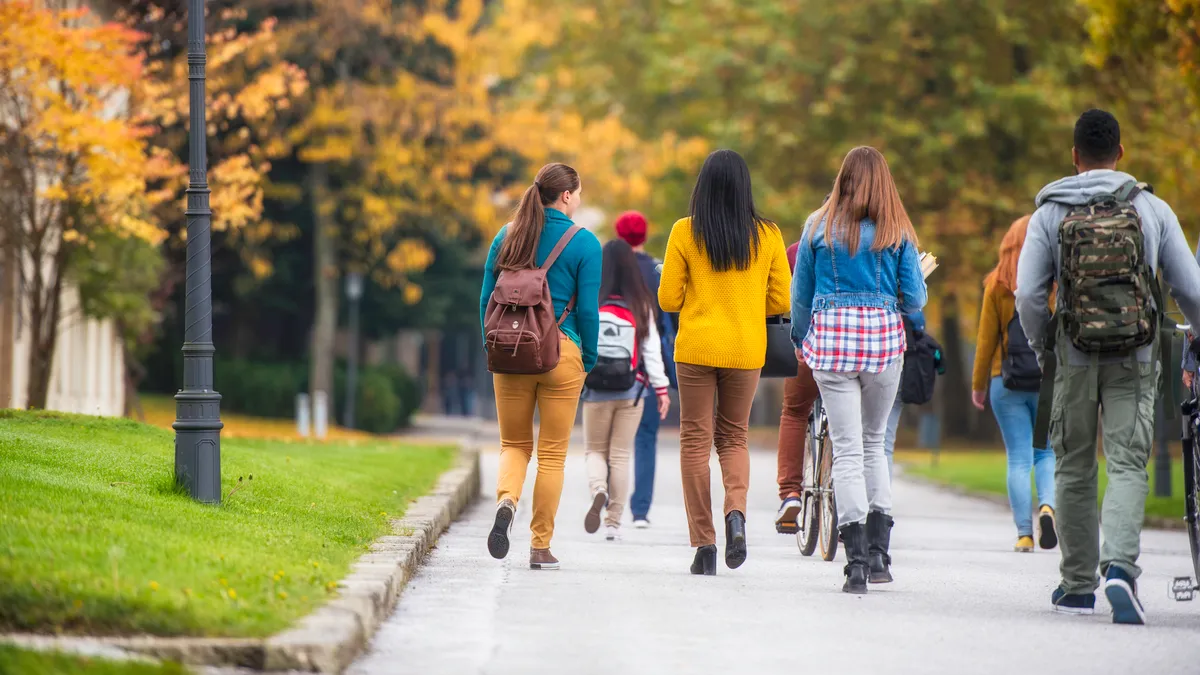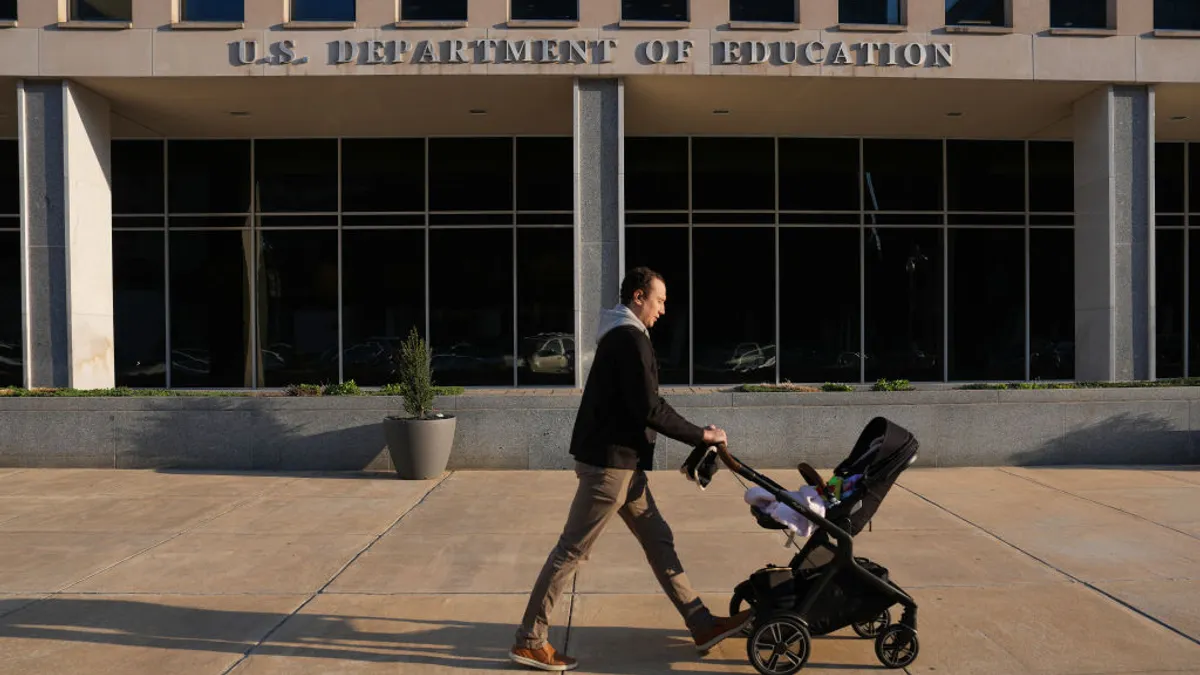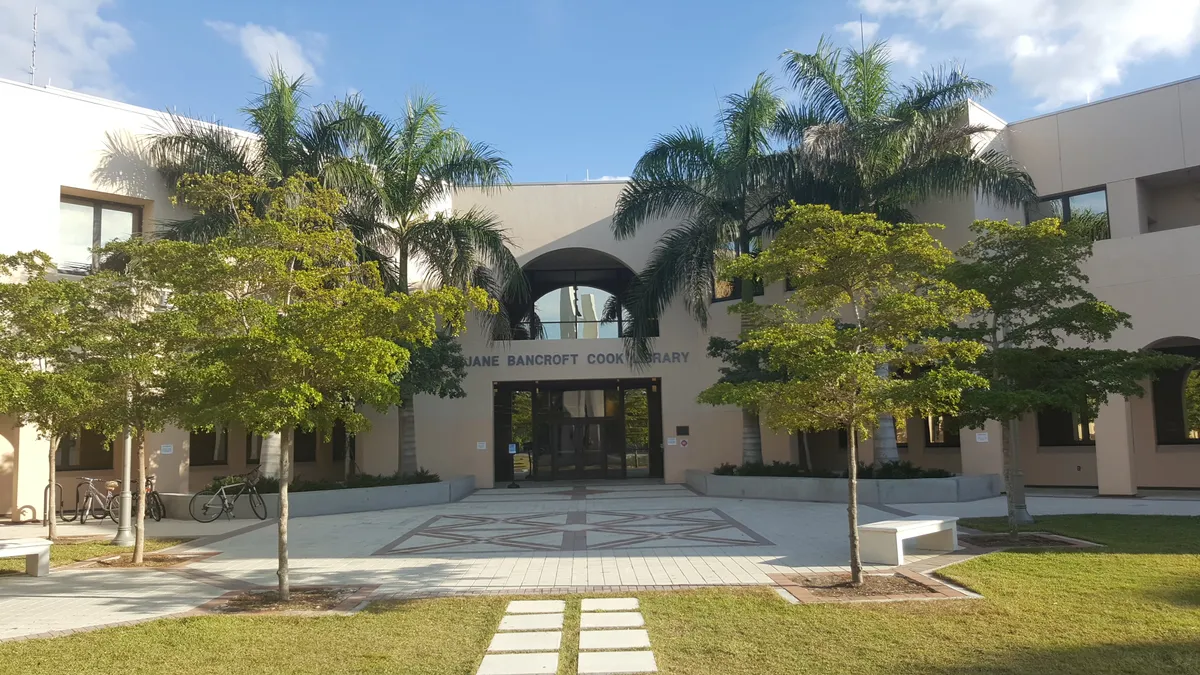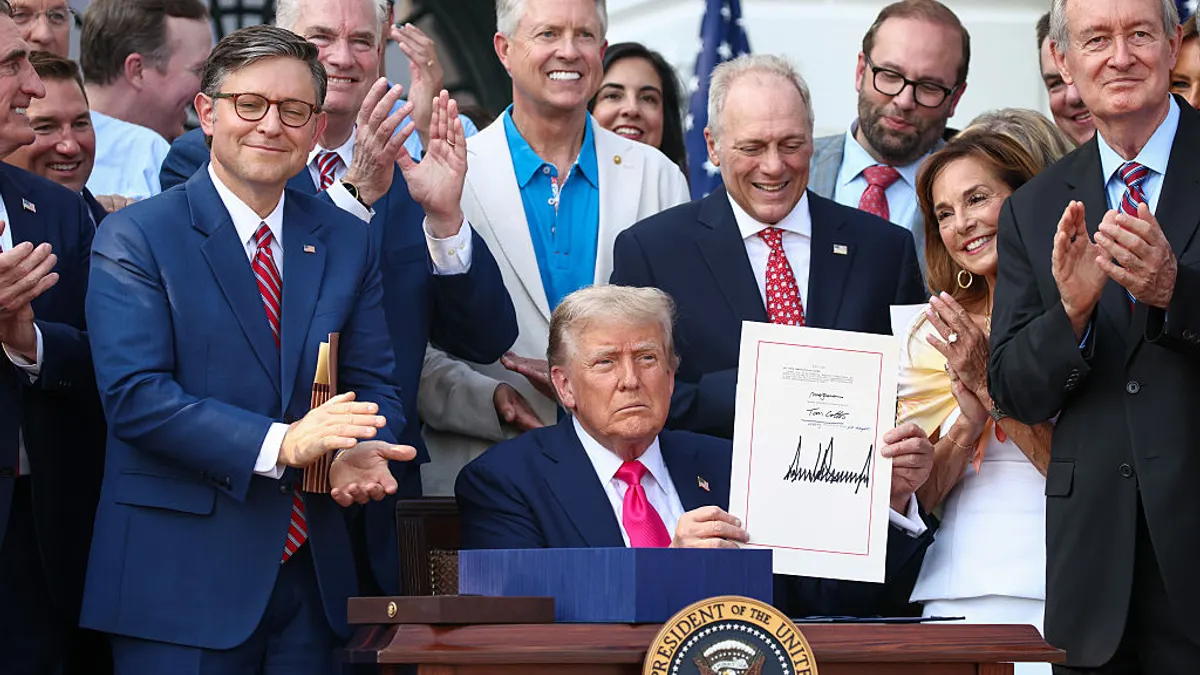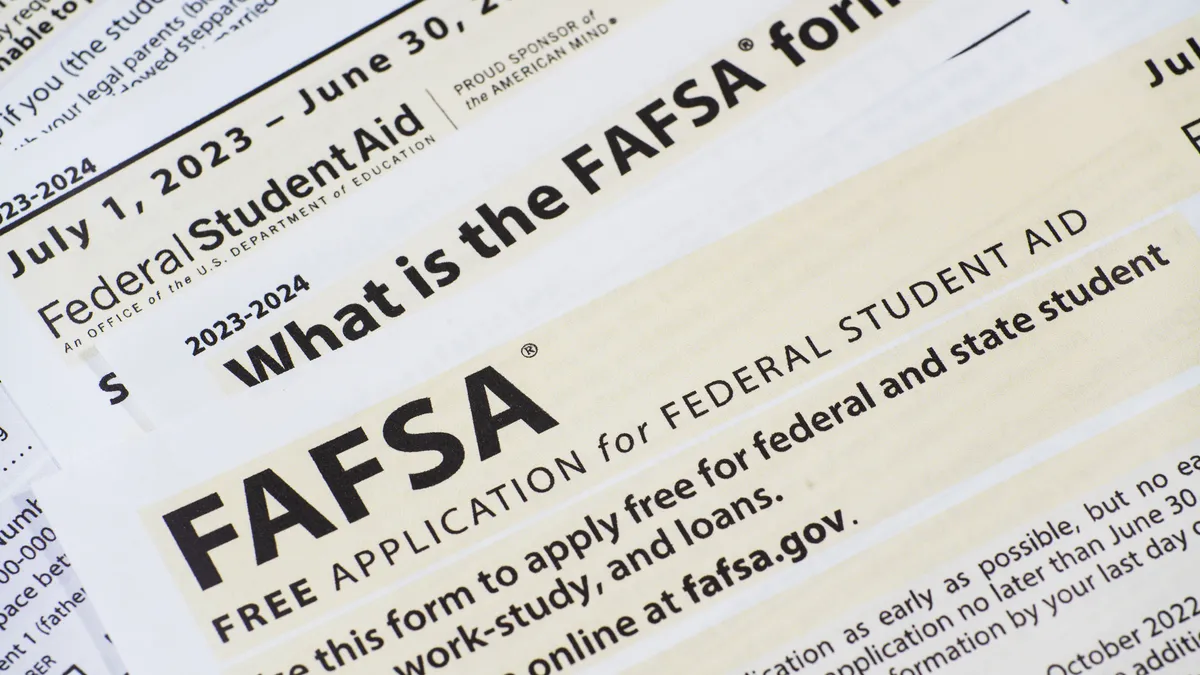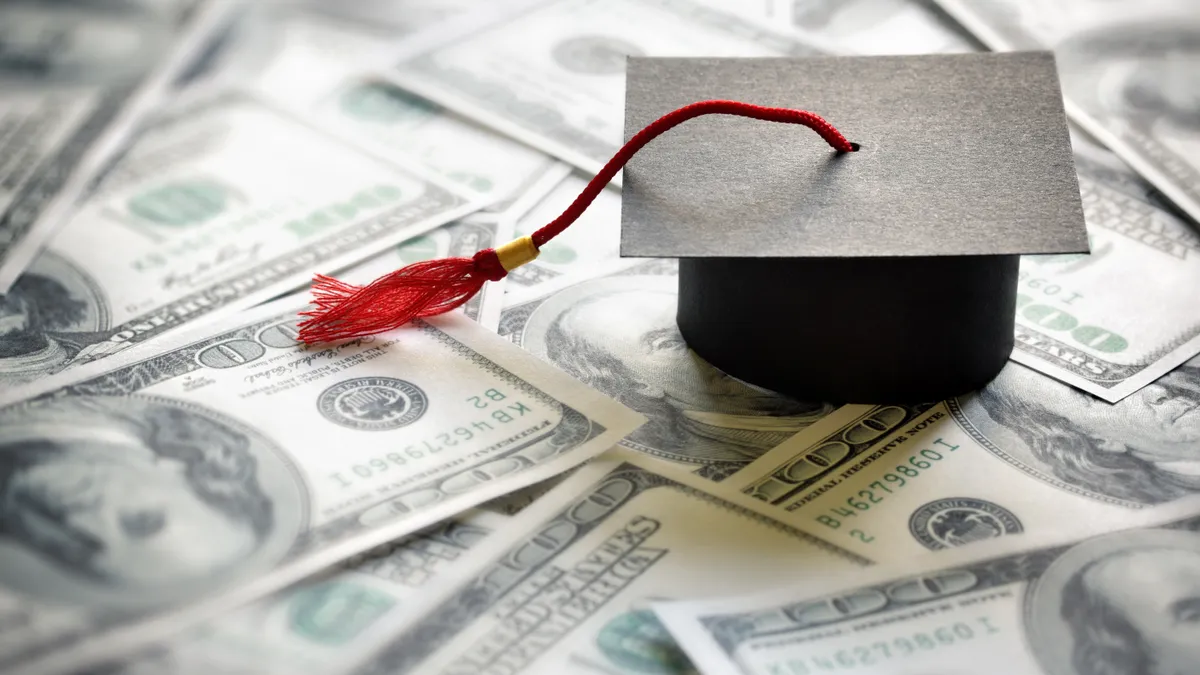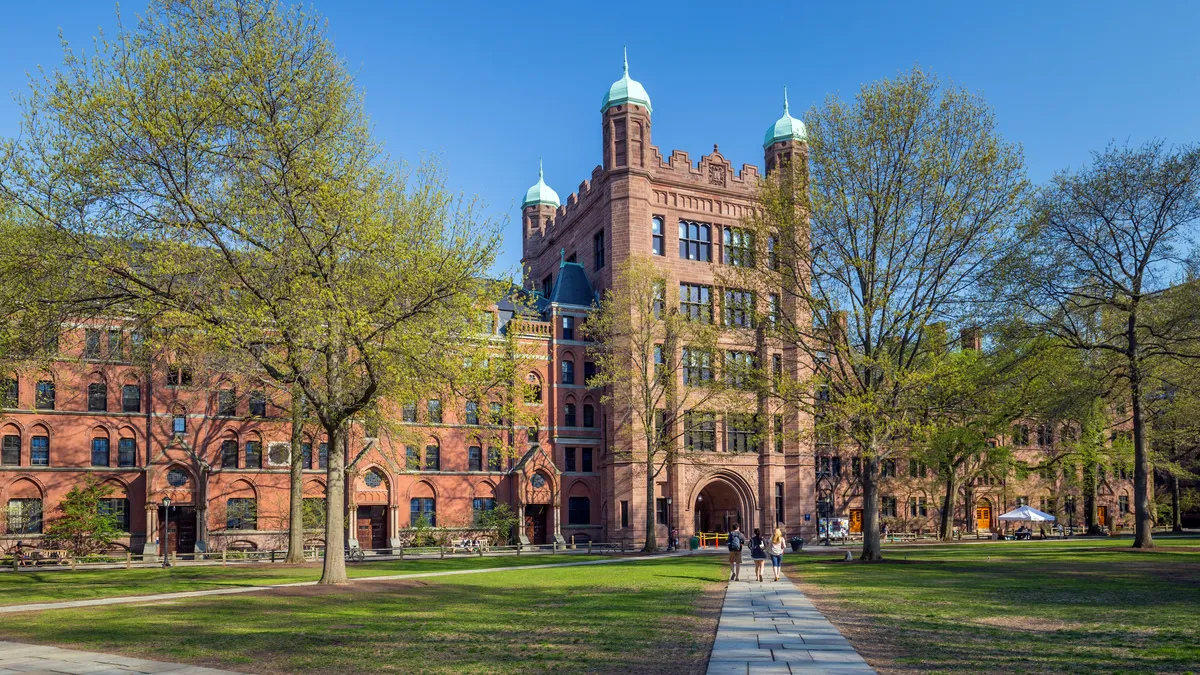New tariffs could make the high cost of attending college even steeper by increasing the likelihood prices on essential items such as computers, food, clothing, housing and transportation will rise.
Increased costs associated with tariffs — the kind the Trump administration has imposed on imports from most foreign countries — would disproportionately affect low-income and commuter students, experts say. They warn that potential price hikes could even cause some students to struggle in class or to attain their degrees.
“The students who are most affected by increased cost of daily goods are the very students for whom college costs are unaffordable in the first place,” said Mark Huelsman, director of policy and advocacy at The Hope Center for Student Basic Needs at Temple University. “Adding additional costs onto budgets that are already stretched beyond the breaking point will simply worsen what has long been a crisis of affordability.”
On April 2, President Donald Trump implemented across-the-board 10% tariffs, though he imposed steeper rates for key trading partners, including China and the European Union.
Days later, he abruptly paused the higher tariffs for 90 days following a sell-off of U.S. Treasury bonds, steep stock market declines and warnings of a recession by economists. However, the president kept the baseline rate of 10% in effect and imposed a 145% rate on China.
Since then, Trump has exempted many electronics from the tariffs — at least temporarily — and negotiated with some countries. Most recently, China and the U.S. agreed to lower tariffs on Chinese imports to 30% while they continue negotiations.
Some colleges could help students mitigate potential price hikes, such as providing them with additional financial aid or emergency assistance, experts say. Many colleges, however, could face cost increases of their own.
And while strategies like providing additional financial assistance to students could help “around the edges,” it won’t “meet the full amount of needs for students,” said Robert Kelchen, an education professor at the University of Tennessee, Knoxville.
In the end, the tariffs could force students to spend thousands of dollars extra to attend college, said Kelchen.
“It’s just going to be a rough time going ahead,” he said.
Saddled by higher costs
It’s still unclear how Trump’s tariff policies will impact the cost of certain products.
But the electronics that students need to do coursework and attend virtual classes — such laptops, headphones, chargers and smartphones — often run through China and don’t have strong supply chains in the U.S. or non-tariffed countries.
That creates “uncertainty about if you can get the supplies that you need at a reasonable price,” said Kelchen.
Many students already struggle to afford other essential items, such as food and clothing, which could also be susceptible to price spikes due to tariffs, said Huelsman. That could impact students’ “basic needs insecurity,” he added.
Low-income students and those from underserved communities would likely be affected the most by increases on essential items, said Huelsman. Over half of Pell Grant recipients reported experiencing food insecurity in the past 30 days, compared to just 35% of non-Pell recipients, according to the Hope Center’s most recent basic needs survey, which was conducted in spring 2023 and summer 2024.
The cost of renting a home could also increase for students living off-campus, as tariffs on Canadian lumber could make building or fixing up affordable housing more expensive, Kelchen said. Tariffs on Canadian lumber stand around 14.5%, but they could double later this year.
Meanwhile, 59% of Pell recipients and 43% of non–Pell students experienced housing insecurity, the Hope Center survey found.
Commuter students and those attending community college could be especially impacted by increased car or auto parts prices, said Huelsman.
The Hope Center’s survey found that 12% of students reported missing class or work during a single academic term due to transportation issues. Even higher transportation costs could “render students without the ability to get to class,” Huelsman said. “We worry about those dynamics impacting student success.”
Pressure on universities to raise costs
Increased tariff costs won’t stop colleges from offering meal plans and maintaining their residence halls and facilities, Kelchen said. But it could mean higher costs for on-campus students moving forward as colleges try to break even on housing and dining expenses, he said.
“They face the same rising costs as students, and they may not have the money to just absorb them,” Kelchen said. “In that case, that will get passed onto students.”
If the tariffs tip the U.S. into a recession, as many economists fear, it could make matters worse. During the Great Recession, states cut funding for public institutions. If that happened again, it could result in mid-year tuition price increases, said Kelchen.
Such cost increases could “catch students unprepared,” said Jill Desjean, director of policy analysis at the National Association of Student Financial Aid Administrators. If students don’t have a way to cover cost increases, they may take a lighter course load or stop out of college altogether, she said.
Kelchen predicted that the former is more likely.
“What we might see here is students staying enrolled, but maybe taking fewer credits in an attempt to try and make things more affordable,” Kelchen said.
He also noted enrollment typically increases during economic challenges because many people turn to higher education when they can’t find a job, he noted.
Support for students
When students struggle to afford daily necessities, particularly food, it can impact their grades, mental health and ability to persist through college, said Huelsman.
Colleges can allow students to qualify for additional federal and institutional financial aid by considering their “special circumstances” — events affecting their ability to afford attending, such as recent unemployment, illness or the death of a family member — said Desjean.
Colleges could also use emergency financial aid programs to help students impacted by higher costs, she said, adding that many higher ed institutions provided emergency student aid during the COVID-19 pandemic using federal relief dollars and their own funding programs.
However, there’s “not always enough financial aid to fill students’ needs,” Desjean said.
Fundraising for money that goes toward students’ basic needs can be “somewhat helpful,” said Kelchen. But most colleges don’t have the resources needed to do that work, he said.
And well-resourced public flagships and private universities are dealing with their own financial crises due to vast federal research funding cuts, he said.
Colleges should help students access public and other financial resources that can help defray the rising costs of attendance and unexpected expenses, such as federal food assistance, child care subsidies, housing supports and technology, such as wireless hotspots, said Huelsman.
That assistance is critical for students, who often need to overcome “several extra hoops” to be eligible for the same federal aid programs as those who aren’t enrolled in higher ed, he said.



